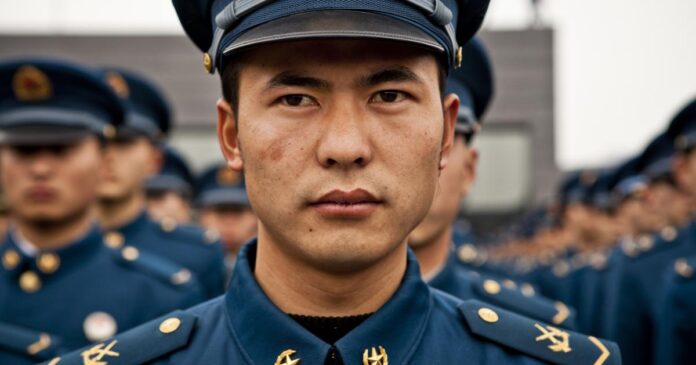Author: Christopher Layne
Affiliation: The Bush School of Government and Public Service-Texas A&M University
Organization/Publisher: Foreign Affairs
Date/Place: November-December, 2020 /USA
Type of Literature: Journal Article
Word Count: 3000
Link: https://www.foreignaffairs.com/articles/united-states/2020-10-13/coming-storms
Keywords: The US, China, The Long Peace Era, lessons of History, and Great-Power War
Brief:
Since the end of World War II, the world has entered an exceptional phase devoid of direct wars between the great powers. This is an incredible thing, given to the bloody course that the modern international system has known since the Treaty of Westphalia in 1648, in a way that makes many scholars describe the post-1945 period as a “long peace” era which turns into a “new peace” marked by a general decrease of violence. In this article, the author criticizes the allegations which exclude the possibility of a return to wars between the great powers as they were before 1945, since the conditions that make them possible still exist. The author focuses on the growing tensions between the US and China, arguing that the two powers are heading in a collision course fueled by the dynamics of the power transition, their rivalry for status and prestige, and their ideologization for this rivalry (as happened during the Cold War between Washington and Moscow). There are also numerous flashpoints between them, any of which could spark a war anytime. Accordingly, “without a change in direction, war between them in the coming decades is not only possible but probable.” In the beginning, Layne criticizes the foundations on which the “long peace” allegations was built, which he describes as “misplaced optimism.” He traces the roots of this optimism to mainstream liberal theories that promote economic interdependence as a factor reducing the risk of a major war between great powers, using in his critiques some arguments from history when the economies of the UK and Germany were closely linked before 1914, yet this did not prevent them from involving in World War I against each other which was unlikely to take place in those days. Additionally, conventional nuclear deterrence in the long peace days (the Cold War period in particular) was an eloquent argument on which to argue for the impossibility of a major war between great powers. However, the author explains how the technological development of the current era has made it possible to wage a “limited” nuclear war that will not lead to horrific destruction, through the use of miniaturized, low-yield nuclear warheads. He also underlines that the US-led liberal international order which the liberals rely on to perpetuate the “long peace” is experiencing a severe internal crisis with the rise of populism and nationalism and the decline of domestic support for it, as well as the shift of the balance of power towards other emerging powers, led by China. The author devotes a long section to the “History laboratory” to emphasize the probability of repeating the British-German scenario (1914) in the coming years between the US and China. Germany was seeking status, prestige, and aspiring to be recognized as a great power on equal terms; its economic, technological, and maritime power was growing rapidly, and it was a rising power impatient to get a fair share in a way that represented a challenge to the UK-led liberal international order at that time. Meanwhile, the UK was a global superpower feeling its own fading, it was too arrogant and lecturing the rest of the world about how to manage its affairs, as well as ignoring any internal warnings of its imminent demise. This was how the clash between the two powers was inevitable, which is exactly what applies to US-Chinese relations today. What increases the likelihood of a war between the US and China in the coming decades is that the Chinese learned a lot from history. China lived a “century of humiliation” at the hands of Western imperial powers in the mid-19th century, when it showed a weak response to the industrial revolution that was taking place in the West and what came with it, i.e. the rise of imperial powers (France and Britain), as these powers were able to control the country’s affairs. China will not repeat the mistake of the past, and its current rise and determination to dominate East Asia will be driven by a desire for revenge. As for its capacity to do so, the author underlines that China is qualified to challenge the US in East Asia by all measures of economic and military powers. Finally, Layne argues that the world is approaching an imminent danger, as the current US-Chinese relations are in a state of collapse, aggravated by attempts to ideologize the rivalry (especially by Washington), and are subject to flare up on many hot fronts (the South China Sea, the Korean Peninsula, Taiwan, Xinjiang, Hong Kong, Tibet, trade relations …) any of which can lead to a direct confrontation, especially if we know that it is difficult for either side to retreat from its major goals (and the steps that entail them). In other words, abandoning the goal of achieving the status of the hegemonic superpower in East Asia for China, and recognizing the end of global primacy for the United States. This is how the US and China are “sleepwalking” into war, as happened with the UK and Germany before. If nothing will be changed in this path, the author says, the two powers will be “on the fast track to war—one that might make the military disasters of Vietnam, Afghanistan, and Iraq pale in comparison.”
By: Djallel Khechib, CIGA Senior Research Associate




